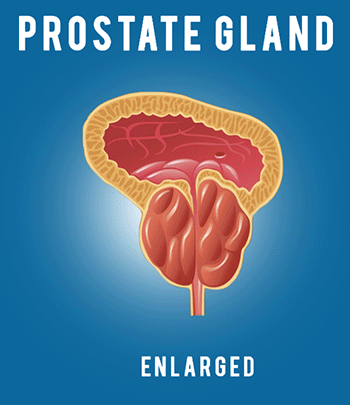BPH and Erectile Dysfunction Medications
BPH and Erectile Dysfunction Medications – Hi, I am Cathy, with Level Up RN. In this video, I’m going to continue my coverage of reproductive system medications. Specifically, I’ll be covering androgens, and BPH and Erectile Dysfunction Medications
If you have our pharmacology second edition flashcards, be sure to pull those out so you can follow along with me. At the end of the video, I’m going to provide you guys a little quiz, a little knowledge check to test your understanding of some of the key points I’ll be covering in this video.
So definitely stay tuned for that. First up, we have testosterone, which is an androgen. It is used in the treatment of delayed puberty in boys, as well as hypogonadism. It could also be used for postmenopausal breast cancer. Testosterone is contraindicated in a patient with prostate cancer. And we also need to keep in mind that this medication has a high abuse potential as well. In terms of side effects, testosterone has a lot of side effects with use.
So this includes edema, acne, liver dysfunction, polycythemia, which is where your body produces too many red blood cells, premature epiphyseal closure. In women, it can cause deepening of the voice, baldness, and unusual hair growth, which is something hirsutism.
So with hirsutism, the female may have hair growth on the face, or chest, or back. Next, let’s talk about some medications that are used for benign prosthetic hyperplasia or BPH. If you recall, BPH is where we have an enlarged prostate, which puts pressure on the urethra which runs through the prostate, so it causes urinary symptoms. So there are two different classes of medications I’m going to cover that are used to treat BPH. One is an androgen inhibitor, which is finasteride.
So finasteride is used to treat not only BPH, but baldness as well. The mode of action of this medication is that it inhibits five alpha reductase, which is an enzyme, and this prevents conversion of testosterone. And then this in turn reduces the size of the prostate and also increases hair growth.
So side effects of finasteride can include erectile dysfunction as well as gynecomastia, which is the development of breast tissue in men. So our little cool chicken hint here for remembering this medication is finasteride, think of checking out a guy in a sports car. So you’re checking out his fine ride and you’re thinking to yourself, “Yeah, he has a fine ride, but he is also bald with BPH.” So got away those things. Again, this hint is just to help you remember the name of this medication and what it’s for.
I totally don’t have a thing against guys with baldness or BPH for that matter. I’m just looking for anything to help you guys remember all of these medications. So hopefully that was helpful. Another medication class used in the treatment of BPH are peripherally acting antiadrenergics, and medications that fall within this class include tamsulosin and doxazosin, and they’re both in that osin. We would use these medications to treat BPH as well as baldness, and doxazosin is also used in the treatment of hypertension.
The mode of action of this medication class is that it antagonizes alpha one receptors, which results in relaxation of the smooth muscles in the prostate, which helps to improve urine flow. It also causes vasodilation. So a key side effect with this medication class is hypotension.
So we’re definitely going to want to monitor our patients blood pressure during therapy. Other side effects include dizziness, headache, and issues with ejaculation. The last medication class that I’m going to cover in this video are phosphodiesterase type five inhibitors, and medications that fall within this class include sildenafil and tadalafil. So these both end in fil. We would use these medications for erectile dysfunction, and they work by enhancing the effect of nitric oxide that is released during sexual stimulation.
And this, in turn, increases blood flow to the corpus cavernosum in the penis. Side effects include priapism, which is a prolonged erection. In addition, this medication can cause an increased risk for myocardial infarctions. So a key teaching you need to provide your patient is that they should not take this medication with any other nitrates, including nitroglycerin, as this can increase their risk for having an MI. Also, we want to use this medication cautiously in men with cardiovascular disease.
So our cool chicken hint for remembering these medications is that sildenafil will help you fill out down there. So I probably should have warned you that this was a PG-13 hint ahead of time, but it’s out there now, and I hope it was helpful. All right, time for quiz. I have three questions for you. First question, finasteride is used to treat what disorder?
If you said BPH, you’re correct. It’s also used to treat baldness, but primarily BPH. Second question, what erectile dysfunction medication causes an increased risk for an MI? Answer, sildenafil or tadalafil. So any of the phosphodiesterase type five inhibitors. Question number three, what key teaching do you need to provide a patient who is taking sildenafil? The answer is you need to advise your patient to not take any other nitrates at the same time.
So this includes nitroglycerin as this could increase their risk for having an MI. Okay. I hope this video has been helpful, and I hope you like these quiz questions. If this has helped you, definitely leave me a comment. I love to hear from students and nurses who watch my videos. Also, if you have another little trick or mnemonic for remembering some of these drugs, definitely share those in the comments as well so everyone can benefit from your ideas.
Fo rmore information on BPH and Erectile Dysfunction Medications please visit our home page or google.


